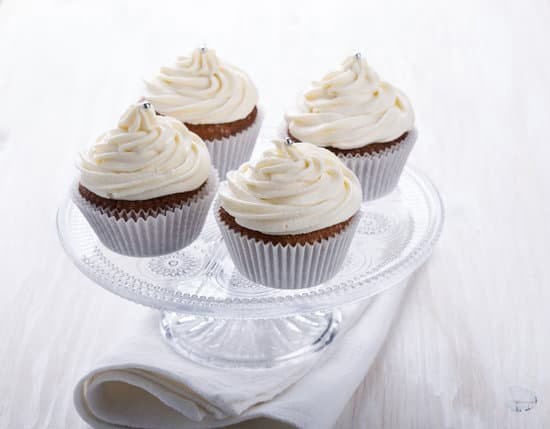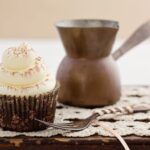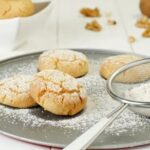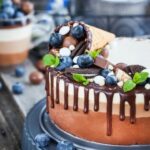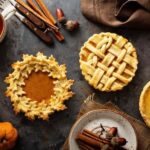Are you looking to learn how to make decorate cake and add a special touch to any celebration? Cake decoration is an essential aspect of creating memorable and beautiful desserts for special occasions. Whether it’s a birthday, wedding, or holiday, a well-decorated cake can be the centerpiece of any event. From basic frosting techniques to intricate designs, cake decorating allows for endless creativity and personalization.
In this article, we will discuss the essential tools needed for cake decorating, the best types of cakes for decoration, various frosting and icing techniques, as well as step-by-step instructions for both basic and advanced decoration designs. Additionally, we will provide expert tips and tricks for flawless cake decorating and highlight special occasion decorating ideas for weddings, birthdays, holidays, and more.
By the end of this article, you’ll be equipped with the knowledge and inspiration to create stunning custom cakes that are sure to impress your guests.
Whether you’re a beginner looking to enhance your baking skills or an experienced baker wanting to explore new techniques, this article will guide you through the art of cake decorating. Get ready to unleash your creativity and elevate your dessert game with these valuable insights into the world of cake decoration.
Essential Tools for Cake Decorating
When it comes to cake decorating, having the right tools and equipment is essential to achieving professional-looking results. Piping bags, tips, offset spatula, and turntable are some of the necessary items that every cake decorator should have in their toolkit.
Piping bags come in various sizes and materials such as disposable and reusable options, allowing decorators to create a wide range of designs using different types of icings and frostings. Tips, on the other hand, come in different shapes and sizes, each producing unique patterns when used with a piping bag.
An offset spatula is another essential tool for cake decorating as it allows for smooth and precise application of frosting or icing on cakes. This versatile tool is also perfect for spreading fillings and creating decorative textures on the surface of the cake.
Additionally, a turntable provides decorators with the ability to effortlessly rotate their cakes while applying frosting or decorations, ensuring an even and consistent finish. With these essential tools at their disposal, aspiring cake decorators can effectively bring their creative visions to life.
In addition to these basic tools, there are other important items such as cake levelers for creating flat surfaces, stencils for intricate designs, and edible decorations like sprinkles and edible glitter that can add extra flair to any cake design. By investing in quality tools and equipment, individuals can elevate their cake decorating skills and master the art of creating beautiful and visually appealing cakes for any occasion.
Choosing the Perfect Cake
Types of Cakes
When it comes to choosing the perfect cake for decorating, the type of cake you select plays a crucial role in the outcome of your decoration. Sponge cakes are light and airy, making them ideal for absorbing syrups and fillings. Butter cakes have a rich flavor and dense texture, which makes them sturdy enough to support intricate decorations.
Meanwhile, chiffon cakes are moist and fluffy, making them a great canvas for various frosting techniques. Understanding the characteristics of different types of cakes will help you choose the most suitable base for your decorating needs.
Suitability for Different Decorating Techniques
Each type of cake has its own strengths and weaknesses when it comes to decorating. For example, buttercream frosting works well on butter cakes due to their denser texture, allowing for smooth finishes and intricate details. On the other hand, fondant can be effortlessly draped over sponge cakes because of their delicate texture without weighing them down. Being aware of how different types of cakes interact with various decorating techniques will help you achieve professional-looking results every time.
Considerations for Specific Designs
Certain types of cakes work better for specific designs and decorations. For example, if you’re planning to create a tiered wedding cake with elaborate floral decorations, a sturdy butter cake would be an excellent choice to support the weight and intricacy of the design. Conversely, if you’re aiming to make a light and whimsical birthday cake with colorful fondant accents, a sponge or chiffon cake would provide the perfect foundation for your creative vision.
By understanding which type of cake is best suited for your specific decorating needs and design concepts, you can ensure that your creations not only look stunning but also taste delicious. Whether it’s for a special occasion or just an everyday treat, selecting the right base is essential in bringing your cake decorating ideas to life.
These considerations go a long way in ensuring that your decorative art piece is both visually appealing as well as delectable to eat.
Frosting and Icing Techniques
Buttercream and Its Versatility
Buttercream is a classic frosting option that is not only delicious but also versatile in cake decorating. It can be easily colored, flavored, and textured to create different effects on cakes. From smooth finishes to intricate piping, buttercream allows for a wide range of creative possibilities when it comes to decorating cakes. Its smooth consistency makes it suitable for layering and filling cakes as well.
Royal Icing for Intricate Designs
Royal icing is a popular choice for creating intricate designs on cakes, such as delicate lace patterns, intricate piping, and 3D decorations. This type of icing hardens when dry, making it ideal for creating detailed designs that hold their shape and form. Royal icing is commonly used in decorating wedding cakes and holiday-themed treats due to its ability to create intricate and elegant designs.
Using Fondant for Flawless Finishes
Fondant is a type of sugar paste that can be rolled out and draped over cakes to create a smooth and flawless finish. It provides a blank canvas for elaborate cake designs and allows decorators to create three-dimensional shapes, figures, and textures with precision. Fondant can also be shaped, sculpted, painted, airbrushed, or stamped to achieve various decorative effects on cakes.
When learning how to make decorate cake it’s important to master different frosting and icing techniques such as buttercream, royal icing, and fondant in order to add the perfect finishing touch to your creations. Each technique offers its own unique advantages when it comes to decorating various types of cakes for different occasions.
Whether you prefer the versatility of buttercream, the intricacy of royal icing, or the flawless finish of fondant, mastering these techniques will elevate your cake decorating skills and take your creations to the next level.
Basic Cake Decorating Designs
When it comes to cake decorating, mastering basic designs is the first step towards creating stunning and delicious works of art. One of the most popular and versatile techniques is piping, which allows you to create beautiful borders, rosettes, and basketweave patterns using different types of icing.
To start with simple piping techniques for borders, you will need a piping bag filled with your choice of icing or frosting and a piping tip. Begin by holding the piping bag at a 45-degree angle to the surface of the cake and applying even pressure as you pipe in a continuous motion around the edge of the cake. Practice will help you achieve smooth and consistent borders.
For rosettes, start by making a small dot in the center of the area where you want to place the rosette. Then, carefully pipe around the dot in a circular motion, gradually widening as you go to create layers of petals. This technique adds a lovely floral touch to your cake decoration.
The basketweave design involves crisscrossing lines made with icing to mimic the appearance of a woven basket. Using an icing bag fitted with a basketweave tip, pipe vertical lines close together on your cake’s surface. Then, create horizontal lines that intersect with the vertical ones to complete the basketweave pattern.
With these basic techniques mastered, you can then combine them to create more intricate designs or explore other simple piping techniques to elevate your cake decorating skills.
| Cake Decorating Design | Instructions |
|---|---|
| Borders | Hold piping bag at 45-degree angle & apply even pressure for smooth borders |
| Rosettes | Create layers of petals by piping in circular motion around center dot |
| Basketweave | Pipe vertical lines close together then intersect with horizontal lines |
Advanced Cake Decorating Techniques
Once you’ve mastered the basic cake decorating designs, you may want to try your hand at more intricate and impressive techniques. Here are some advanced cake decorating techniques that will take your creations to the next level:
1. Sugar Flowers:
Sugar flowers are a beautiful and intricate addition to any cake. To make sugar flowers, you will need fondant or gum paste, flower cutters, veiners, and petal dust. Start by shaping small pieces of fondant or gum paste into petals and leaves using the cutters and veiners.
Then, use petal dust to add color and shading for a lifelike appearance. Arrange the petals and leaves together to create stunning floral arrangements that will elevate your cake decoration to a professional level.
2. Intricate Piping:
Intricate piping involves using different piping tips to create detailed designs on your cakes. With a steady hand and some practice, you can create lace patterns, filigree designs, or even delicate lacework on your cakes using royal icing or buttercream. Invest in specialty piping tips such as lace tips, leaf tips, and petal tips for a wide range of decorative options.
3. Fondant Sculpting:
Fondant sculpting allows you to create three-dimensional decorations for your cakes, such as characters, animals, or objects. To sculpt with fondant, start by kneading it until it is pliable and then shape it into your desired form using sculpting tools or even just your hands. You can add details by painting with food coloring or adding edible luster dust for a realistic finish.
Mastering these advanced cake decorating techniques will impress your friends and family at special occasions and turn you into the go-to baker for stunning custom-designed cakes.
Expert Tips and Tricks
Cake decorating may seem daunting, but with the right tips and tricks, anyone can achieve flawless results. Here are some professional insights on how to make decorate cake that will help you elevate your cake decorating game:
- Achieving Smooth Frosting: One of the keys to a beautiful cake is achieving smooth and even frosting. To achieve this, it is essential to start with a properly crumb-coated cake. Apply a thin layer of frosting to seal in any crumbs, then chill the cake before applying the final layer of frosting. Using an offset spatula and bench scraper will help you achieve a smooth finish.
- Preventing Air Bubbles: Air bubbles can ruin the appearance of a perfectly frosted cake. To prevent air bubbles from forming in your frosting, gently tap the filled piping bag on the counter to release any trapped air before piping. Additionally, slowly squeezing the piping bag while decorating will also help prevent air pockets from forming
- Fixing Common Decorating Mistakes: Even seasoned decorators make mistakes, but there are ways to fix them without starting over. If you make a mistake while piping or applying fondant, don’t panic. Use a small offset spatula to carefully smooth out any imperfections or use a toothpick or small brush to correct any errors before the icing sets. With practice and patience, you can easily fix minor mistakes without anyone noticing.
These expert tips and tricks for flawless cake decorating are invaluable for anyone looking to create stunning cakes at home or as part of their business.
Whether you’re a beginner or an experienced baker, incorporating these tips into your cake decorating process will undoubtedly improve your skills and the overall appearance of your creations.
Remember that practice makes perfect when it comes to cake decorating, so don’t be discouraged by initial imperfections – keep experimenting and honing your skills until you achieve the flawless designs you’ve been dreaming of creating.
Special Occasion Cake Decorating
When it comes to special occasions such as weddings, birthdays, and holidays, the cake often takes center stage as a symbol of celebration. It’s not just about the taste, but also about the visual appeal that makes a cake truly memorable. Whether you’re planning to make your own special occasion cake or commissioning one from a professional baker, here are some creative ideas for themed cakes and custom designs that will surely wow your guests.
For weddings, one popular trend is the minimalist and elegant design. Think clean lines, simple floral arrangements, and perhaps a touch of metallic accents. A white or ivory fondant with delicate piping can create a timeless and sophisticated look. Another option is to incorporate the wedding theme or color scheme into the cake design, whether it’s through intricate sugar flowers or hand-painted details.
When it comes to birthdays, the sky’s the limit in terms of creativity. From whimsical character cakes for kids to elegant tiered cakes for adults, there are endless possibilities. Consider incorporating the birthday person’s favorite hobbies, interests, or even their profession into the cake design. For milestone birthdays like 21st or 50th birthdays, consider adding personal touches such as edible photos or meaningful quotes.
During holidays such as Christmas, Easter, or Halloween, themed cakes can add an extra element of fun to the celebration. From Santa Claus-shaped cakes for Christmas to spooky graveyard designs for Halloween, there are plenty of opportunities to get creative with holiday-themed cakes. Additionally, consider incorporating seasonal flavors and ingredients into your cake to tie in with the holiday theme.
No matter what special occasion you’re celebrating, customized designs can truly elevate the cake into a work of art that reflects the significance of the event. By incorporating personalized elements and thoughtful details into your cake decorating process, you can create a show-stopping centerpiece that will be remembered long after the last crumb has been eaten.
Conclusion
In conclusion, cake decorating is much more than just adding a visually appealing touch to a cake. It involves creativity and skill, turning a simple confection into a work of art that enhances any celebration.
From choosing the perfect cake base to mastering frosting and icing techniques, there are endless possibilities for creating unique designs that reflect the theme or sentiment of any special occasion. Whether it’s a wedding, birthday, or holiday, the art of decorating cakes allows for personal expression and craftsmanship.
As we have discussed throughout this article, having the essential tools and knowing different techniques are crucial in learning how to make decorate cake effectively. From basic designs like rosettes and basketweave to more advanced techniques such as sugar flowers and fondant sculpting, there is always something new to explore in the world of cake decoration. While it may seem daunting at first, with practice and patience, anyone can develop their own skills in this craft.
Therefore, I encourage readers to embrace the challenge of cake decorating as an opportunity to showcase their creativity and add a personalized touch to their special occasions. There is no limit to what can be achieved with some practice and a willingness to experiment with different designs and techniques.
With dedication and passion for this art form, anyone can become adept at transforming plain cakes into stunning masterpieces that will leave lasting impressions on family and friends. So go ahead, pick up those piping bags and offset spatulas – let your imagination run wild as you embark on your own journey into the world of cake decorating.
Frequently Asked Questions
How to Easily Decorate a Cake?
Decorating a cake can be made easier by using simple techniques such as using a piping bag to create designs with frosting, adding fresh fruit or edible flowers for a decorative touch, and using stencils to create patterns with powdered sugar or cocoa.
How Do You Prepare a Cake for Decorations?
Before decorating a cake, it’s important to prepare it properly by leveling the top, applying a crumb coat of frosting to seal in any loose crumbs, and chilling the cake to set the crumb coat. This will ensure that the decorations go on smoothly and look polished.
What Are the 5 Kinds of Cake Decorating?
The five main kinds of cake decorating include buttercream piping, where different tips are used to create various designs with frosting; fondant work, which involves covering cakes with a smooth layer of fondant and then sculpting it into shapes or patterns; royal icing techniques, like intricate lacework or delicate flower decorations; chocolate decoration, where melted chocolate is used to create intricate designs; and edible printing, where images are printed onto edible paper and applied to the cake for a personalized touch.

Welcome to our cake decorating blog! My name is Destiny Flores, and I am the proud owner of a cake decorating business named Cake Karma. Our mission is to provide delicious, beautiful cakes for all occasions. We specialize in creating custom cakes that are tailored specifically to each customer’s individual needs and tastes.

